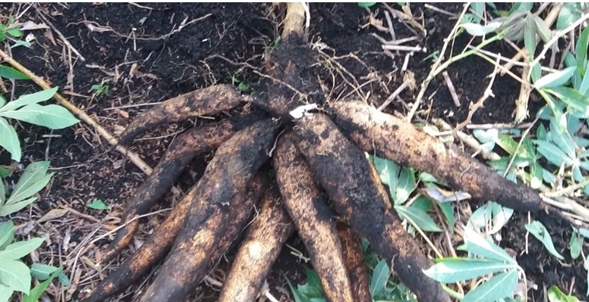Roots and Tubers Innovation Network
Manager
Olga Yaneth Perez Cardona CRIS AGROSAVIA
Scope
Contribute to improving the sustainability of root and tuber production systems through R&D&I activities aimed at addressing territorial and national technological demands, while enhancing the quality of life of both producers and consumers.
Goals
-
🌱 Conserve, characterize, and enhance genetic resources, in order to develop new varieties with superior traits suited to the country’s ecosystems and resilient to climate change, contributing to food security and sovereignty and the full realization of the right to food.
-
🛠️ Develop technological products and validated sets of recommendations that align with the socioeconomic and agroecological conditions of the territories, combining scientific knowledge with traditional knowledge, contributing to the sustainability and competitiveness of agri-food systems.
-
🚜 Generate and adapt sustainable technologies for harvesting, post-harvesting, and processing, aimed at reducing production losses, meeting new market demands, and fostering the development of rural agro-industries within the framework of reindustrialization policies, territorial development, and the human right to food.
-
🔗 Contribute to the social appropriation of knowledge and to innovation in agri-food systems of roots and tubers, through technology transfer and engagement, including socioeconomic impact analysis and socio-business support for local producers and technicians.
Gallery





Highlighted Initiatives

Technology Foresight: Identifying Potential Uses of Cassava (Manihot esculenta)
Scientific and technological foresight enables the identification of key trends in a specific topic, facilitating strategic decision-making regarding research lines, global developments, and key stakeholders.
In this study, this tool was applied to analyze the state of the art regarding the potential uses of cassava (Manihot esculenta) in the Colombian context, based on a review of scientific and technological literature. Cassava—also known as manioc or yuca—is a high-value tropical crop widely used for industrial starch production, with a global demand exceeding 50 million tons annually.
Approximately 65% of global cassava production is used for human consumption, making it essential for low-income rural communities. Both its root and leaves are edible, and under optimal conditions, cassava can reach starch content levels between 27% and 36%, making it ideal for tapioca production.
More information: https://repository.agrosavia.co/handle/20.500.12324/39004




